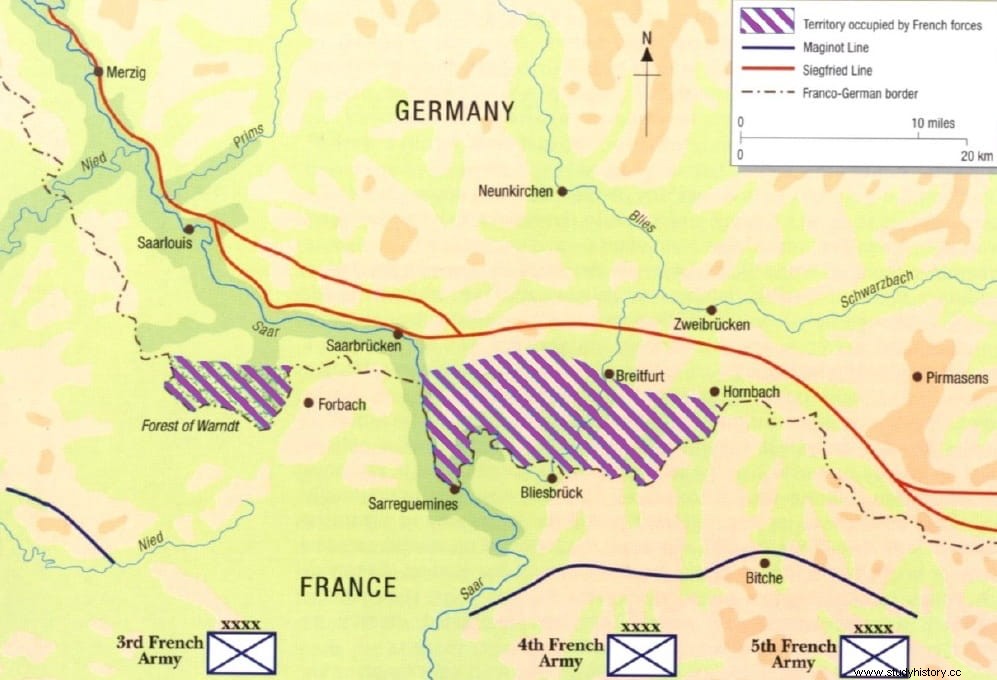The story of how Germany invaded France, Belgium and the Netherlands in an operation that began on May 10, 1940 is well known. But perhaps not so much that the French launched an invasion against Germany in September 1939 , which makes this operation the first on the Western Front during World War II.
The French attack, which was brief and ineffective, was aimed at helping Poland opening a second front. But it ended with an embarrassing defeat and a preview of what would come next.
The reason for this action must be found in the military treaty signed by France and Poland in 1921, which committed both countries to mutual support in the event of aggression by Germany. It would be by virtue of this agreement that, two days after the German invasion of Poland on September 1, 1939, France declared war on Germany.
The declaration of war, like the English one produced the same day, was still a symbolic act, given the distance that separated them from Poland, and the impossibility of offering direct military aid. But there was an option, to open a second front to force the Nazis to withdraw forces from the attack on Poland. Even if the operation failed in this objective, it would at least give France some advantage in the war that now seemed inevitable.

This is how the Sar Offensive was orchestrated , the invasion of this German territory that France launched on September 7, 1939 with a small force that would later be followed by a full-scale invasion. Between September 7 and 12, the French were to send 40 divisions with 4,700 artillery pieces and 2,400 armored vehicles. German defenses in the area consisted of only 22 divisions and fewer than 100 artillery pieces.
To the surprise of the French they soon managed to penetrate up to 8 kilometers into German territory , because they had given the order to evacuate, withdrawing to the Siegfried Line, but leaving the territory riddled with mines, something for which the French soldiers were not equipped.
Soon they manage to occupy up to 20 villages, with very little strategic value, on a front up to 32 kilometers long, but they are stopped in front of the city of Saarbrücken. The problem was that the French mobilization system was outdated, based on World War I strategies, cumbersome and expensive.

Upon reaching the German defenses of the Siegfried Line they discovered the effectiveness of these and the very ineffectiveness of the outdated weapons that they had brought with them. In order to respond to the German artillery they had to get within firing range, but the French shells could barely make a dent in the Nazi bunkers.
On September 12, the French high command orders to stop all attacks, but to stay less than a kilometer from the German positions. They tell the Poles that the offensive is delayed until the 20th, but the reality is that the bulk of the 40 divisions that were supposed to attack were never sent.
On September 17 the Russian invasion of Poland It ends up destroying all hopes and the French forces decide to retreat from the Saar to the Maginot Line , leaving only a small holding force in the occupied villages.
With Poland definitively conquered, the German armies moved to the West, where they launched the Saarland counter-offensive on October 16, 1939, easily recovering all the lost territory without opposition, and even penetrating a few kilometers into France. But they stopped on October 24.
Things would remain more or less calm for 7 months, until on May 10, 1940, Germany would launch its final attack.
